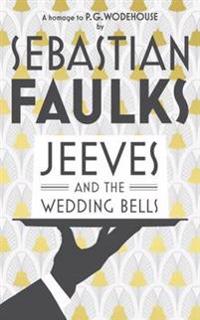By Sebastian Faulks. Grade: B
One can never get enough of Wodehouse. The numerous adventures of Bertie Wooster, and his gentleman’s personal gentleman, Reginald Jeeves, are forever etched in our memories. Thus, when novelist Sebastian Faulks brings forth a new tale – ‘Jeeves and the Wedding Bells’ – with the approval of the Wodehouse estate comprising of these favourite characters, the loyal fans definitely find a reason to smile.
Wooster’s friend, Beeching’s, love dilemma forms the background of the story. Beeching and his fiancée Amelia’s romance is in full swing, until she finds him flirting with other girls. So displeased is she by his act that her warmth soon turns into ice, which perturbs him a great deal. Poor Beeching approaches Wooster and Jeeves for help, so that he can regain the trust of his love. To assist his companion, Wooster, along with Jeeves, visit Melbury Hall, in their respective disguises, coming across a wide array of people. However, their roles are reversed, with Jeeves posing as a respectable gentleman, and Wooster, acting as a helping hand to the butlers and housekeepers of Sir Henry Hackwood.
We love Jeeves, yes, we all do, and we love him all the more in this story. He is knowledgeable, wise and has an unparalleled degree of intelligence. Jeeves has a great presence of mind, and can gauge people and their thinking. Jeeves and Wooster form an inseparable pair, their conversations amusing, and at some places leading to a few giggles. Wooster is incomplete without Jeeves and his meticulous planning, a fact that gets reiterated once again in this book.
Though ‘Jeeves and the Wedding Bells’ serves as a homage to P. G. Wodehouse, Faulks has deviated on a few occasions from Wodehouse’s conventional method of story telling. For example, the mention of real world events like World War or the General Strike is in sharp contrast to Wodehouse’s completely fictional tales, that transcended the readers to a world of total fiction. Again, we have seen romantic attempts of Wooster in Wodehouse’s stories, but they were all in light veins and were not supposed to result in a final union. Faulks treats romance differently in this book, giving the Wodehouse romance an all new twist, which may or may not go down well with the Wodehouse loyalists.
The best portions of ‘Jeeves and the Wedding Bells’ are the scenes involving Jeeves. As the protagonist, he keeps the smiles on your faces, with Wooster turning out to be an able aide. I also loved the game of cricket involving the characters, the commentary being top notch. In fact, the descriptions are vivid throughout the book, and you as a reader feel at ease with the narrative. The language is crisp and polished, and has an amicable ambiance around it.
However, ‘Jeeves and the Wedding Bells’ shines only in patches. There are some parts that tend to drag a bit. Faulks has tried introducing several twists to heighten the readers’ curiosity, but fails to execute the turning points of the plot in the desired manner. While you will love some characters and portions in the book, it might fall short of your expectation if you are a strict Wodehouse fan. For new readers, though, this book will serve as a good few hours of entertainment.

